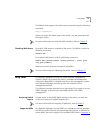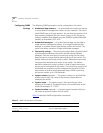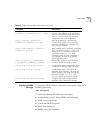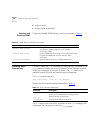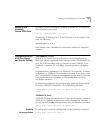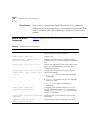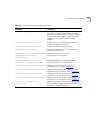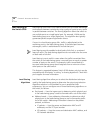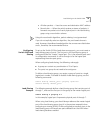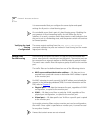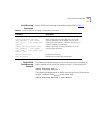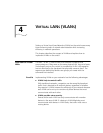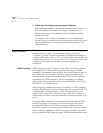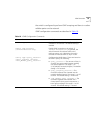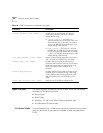
Load Sharing on the Switch 9100
59
■
All other packets — Uses the source and destination MAC address.
■
Round-robin — When the switch receives a stream of packets, it
forwards one packet out of each physical port in the load-sharing
group using a round-robin scheme.
Using the round-robin algorithm, packet ordering is not guaranteed.
If you do not explicitly select an algorithm, the port-based scheme is
used. However, the address-based algorithm has a more even distribution
and is, therefore, the recommended choice.
Configuring
Switch 9100 Load
Sharing
To set up the Switch 9100 to load share among ports, you must create a
load-sharing group of ports. The first port in the load-sharing group is
configured to be the “master” logical port. This is the reference port used
in configuration commands. It can be thought of as the logical port
representing the entire port group.
When configuring load sharing, the following rules apply:
■
A group can contain any combination of 2 to 8 ports.
■
The ports in a group do not need to be contiguous.
To define a load-sharing group, you assign a group of ports to a single,
logical port number. To enable or disable a load-sharing group, use the
following commands:
enable sharing <master_port> grouping <portlist>
disable sharing <master_port>
Load-Sharing
Example
The following example defines a load-sharing group that contains ports 4
through 7, and uses the first port in the group as the master logical port:
enable sharing 4 grouping 4-7
In this example, logical port 4 represents physical ports 4 through 7.
When using load sharing, you should always reference the master logical
port of the load-sharing group (port 4 in the previous example) when
configuring or viewing VLANs. VLANs configured to use other ports in the
load-sharing group will have those ports deleted from the VLAN when
load sharing becomes enabled.



